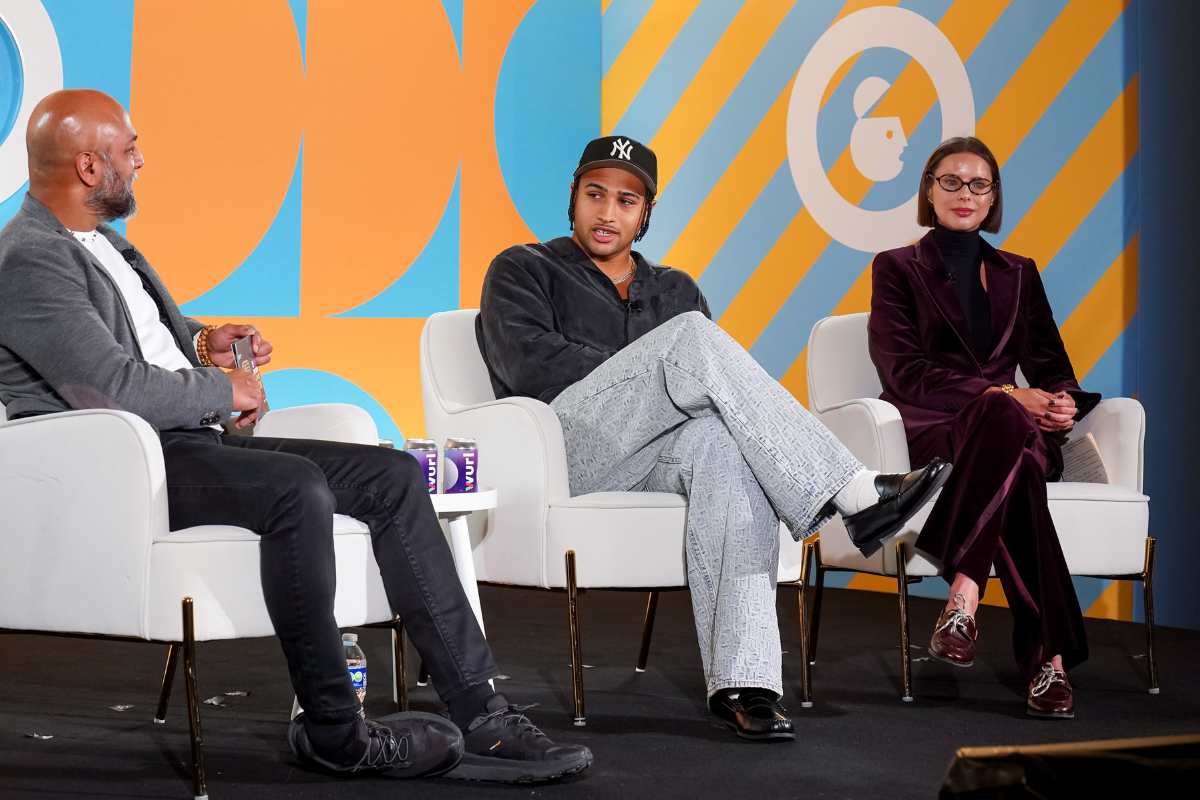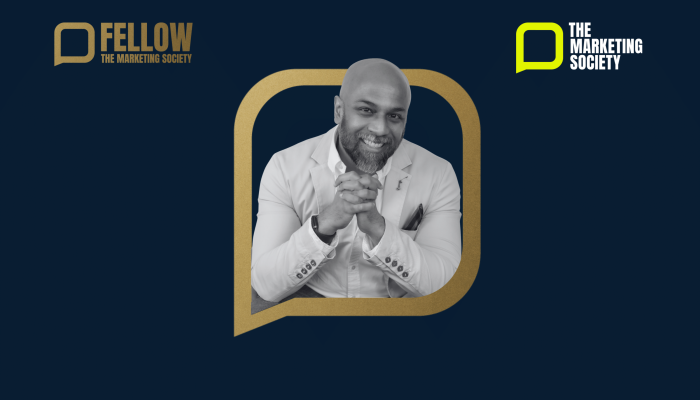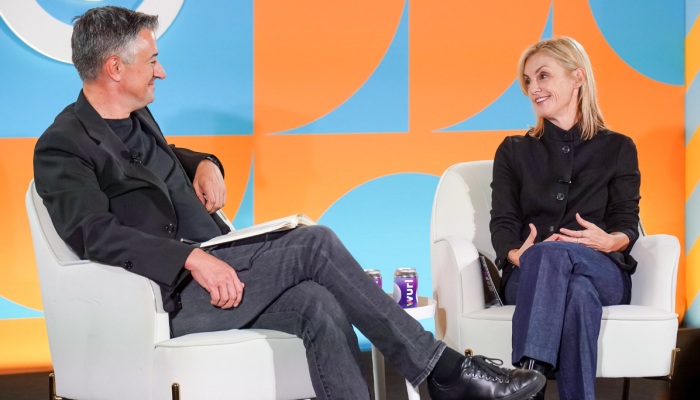The Marketing Society brought its global Changemakers series to Advertising Week New York, gathering marketing leaders to explore how challenge creates opportunity. From Wendy Kula's stories of creative courage at Nike to Second City's lessons on improvisational agility, the morning proved that the best marketers don't just respond to change, they create it. Across conversations about Gen Z authenticity, creator partnerships, and the evolving CMO role, one truth emerged: human connection and emotional intelligence remain the ultimate competitive advantage in an AI-powered world.
Five Key Points
Authenticity Beats Algorithm
Gen Z appear in 93% of US ads, yet their emotional response to seeing themselves is below average. Presence without connection means nothing. Amazon's decade-long "triumph of the everyday hero" platform succeeds because it focuses on universal human truths rather than literal representation. Tell one person's story brilliantly rather than represent a group badly.
Partnerships Require Co-Creation
The days of transactional sponsorships are over. Athletes and creators don't want scripts, they want to tell their own stories. When Tim Walsh told Rich Ting to play his character as Japanese-Chinese rather than Cambodian as written, everything changed. True partnership means giving people permission to bring their whole selves to the work.
"Yes, And" Transforms Leadership
Second City's core principle applies far beyond improv stages. When you replace "no, because" with "yes, and," energy shifts, creativity flows, and collaboration becomes natural. The best leaders listen to build, not to reply. They turn down the spotlight on themselves and turn it up on everyone around them.
AI Empowers, It Doesn't Replace
Creators use AI as a 24/7 assistant for logistics, trends, and efficiency, but never for their creative vision or personal style. That's what makes them irreplaceable. One CMO used AI to audit their calendar and discovered they were spending too much time in meetings instead of coaching their team. Technology reveals truths, but humans must act on them.
The CMO Role is Expanding, Not Shrinking
Average CMO tenure is 3.9 years. Only 58% of Fortune 500 companies have a marketing executive reporting to the CEO. Marketing budgets have fallen from 11% of revenue to 7%. Yet the responsibility keeps growing. The CMO of the future must be a unifier, blending creativity with commercial accountability, empathy with analytics, storytelling with spreadsheets.
Leading with Courage and Conviction
Wendy Kula opened the morning by taking the audience through her unconventional career path, from handling a barefoot Shakira campaign at Reebok to leading Nike's Super Bowl return after 27 years. Her philosophy centres on four principles: conviction, courage, curiosity, and collaboration. As a fourth-generation athlete who benefited from Title IX, she credits sport with teaching her resilience, teamwork, and how to navigate wins and losses.
Her approach to partnerships has evolved dramatically over two decades. Early in her career at Reebok, working with Jay-Z on the S. Carter collection, sponsorships were transactional. Today, athletes and entertainers want input into creativity. They want to tell their own stories, not perform in someone else's script. The shift from sponsorship to co-creation transforms outcomes because when talent has ownership, they invest differently.
Wendy's career choices have consistently leaned towards roles that scare her. Taking on messy, high-impact work attracts the best teams and accelerates learning. Her proudest achievement was leading Nike's Super Bowl campaign fronted by an all-female athlete roster with the message "If you can't, you can't win, so win." That moment crystallised everything she believes: conviction in what matters, courage to challenge convention, curiosity to keep learning, and collaboration that empowers others.
Sophie Devonshire closed the session with a challenge that would thread through the entire morning: look up, not down. The best leaders don't stare at spreadsheets, they look around, learn from others, and share ideas generously.
Improvisational Agility as Leadership Practice
Tamara Nolte from Second City Works brought the principles of improvisation to life through interactive exercises. The session opened with a simple gratitude exercise, reframing unexpected gifts as opportunities rather than disruptions. Improvisers learn to see every challenge as something to work with, not against. That mindset keeps you in front of the audience, ready to take risks.
The room then experienced the difference between "no, because" and "yes, and" conversations. When planning a dream home using "no, because," energy collapsed, body language closed, and creativity died. Switching to "yes, and" changed everything. People smiled, leaned in, and built on each other's ideas. The lesson was immediate and visceral: "yes, and" isn't blind agreement, it's acknowledgment and collaboration.
Tamara shared her background performing in a hip-hop improv group in Chicago and an impromptu rap battle with Snoop Dogg. She explained how Second City noticed people coming to classes not to become comedians but to become better communicators, collaborators, and leaders. The core principle they teach: listen to build, not to reply. Turn down the noise in your head, what you want to say, your self-judgment, and genuinely listen to what others are saying.
That shift transforms leadership. Stop performing for yourself and start supporting the scene around you. Turn down the spotlight on yourself and turn up the spotlight on everyone else. When you stay grateful for the unknown and listen to build, you become more resilient, ready, and capable in the face of change.
Authenticity in the Creator Economy
Jarren Barboza and Marina Morozova brought honest perspectives on staying authentic as creators in an AI-accelerated world. Jarren, a professional BMX rider who built a global creative platform, described how leaning into his full personality rather than just riding created his personal brand. Early in his career, showing interests beyond BMX was considered taboo in his industry. By embracing his whole self, he built something more meaningful.
His "On Two Wheels" project took online audiences into the real world, hosting rides in cities globally. Seeing people show up and share their dreams made him realise this was bigger than posting online. Real community happens when you create spaces for genuine connection, not just digital engagement.
Marina, a fashion stylist, uses AI as her 24/7 assistant for logistics and trend analysis but never for creative direction. AI can help with trends, but it can't help with personal style, voice, or vision. That's what makes creators irreplaceable. She only collaborates with brands that fit her aesthetic naturally. Her audience should never think "that's out of the blue." When alignment exists, trust follows automatically.
Both creators emphasised that the best brand partnerships happen when you have your project or story in mind first, then the brand fits naturally within it. Don't let brands dictate your narrative. Bring them into yours.
Representation Done Right
Rich Ting and Tim Walsh shared their collaboration on Amazon Prime's "On Call," demonstrating what authentic representation looks like in practice. Rich, a fourth-generation Asian American actor, spent years trying to fit in rather than stand out. Hollywood asked him to blend in, to be what others wanted him to be.
Working with Tim changed everything. When cast in "On Call," Rich was told the role was Cambodian. Tim insisted he play the character as himself, drawing on his Japanese-Chinese heritage. Rich was invited to choose his character's name, combining his mother's Japanese family name with her late dog's name. That permission to bring his whole self to the role was transformative.
Tim described the decision as common sense, but acknowledged that the fact it was remarkable reveals how far the industry still needs to go. His leadership philosophy centres on creating spaces where everyone can contribute their full selves. When people feel seen and valued, they invest more deeply. If you give someone the ability to invest themselves in your product, it becomes their product too.
Tim challenged the room to rethink diversity not just as representation but as diversity of thought. He looks for writers who don't think like him, who disagree with him, who didn't vote like him. That's how you make three-dimensional art. Art dies when everyone thinks the same.
Rich shared how doing ride-alongs with real police officers shaped his approach. He wasn't there to watch how they made arrests. He wanted to see their humanity, how they talk in the car, how they go home to their families. These are people doing their best in impossible situations. That's what he wanted to show.
The Gen Z Disconnect
System1 research revealed a troubling gap between Gen Z presence in advertising and their emotional response. They appear in 93% of US ads, with nearly half putting them in lead roles. Yet when asked how these ads make them feel, their emotional response scores below average, particularly for young men.
The problem isn't presence, it's connection. Ads showing Gen Z constantly on phones underperform. What resonates? Human connection, kindness, ambition, intergenerational relationships, and stories that feel true rather than tokenistic. Sport-themed work under-indexes with young men compared to stories about career progress, financial independence, and strong friendships. Body positivity and sporting success outperform influencer-lite superficiality for young women.
Jo Shoesmith, Amazon's Chief Creative Officer, shared how their "triumph of the everyday hero" platform has run for a decade. The secret: timeless human stories that travel globally. A Japan-origin story resonated in Europe, US, and Australia because audiences saw themselves in the emotion and situation, not just in casting. Universal truths beat literal mirroring every time.
Her advice was clear: tell one person's story really well rather than represent a group badly. Amazon optimises for human stories and joy despite being a tech company. Their logo is a smile. Emotion matters. Avoid overwriting and protect simple, generous moments. Design for longevity. Build platforms that live three to five years, refresh executions, and resist new-for-new's sake.
The Evolving CMO Challenge
The CMO panel explored why marketing leadership feels like "everything, everywhere, all at once." One speaker used AI to audit their calendar and discovered a striking pattern: most time was spent in large meetings rather than coaching people. The fix was deliberate. They now spend 50% of their time helping their team future-proof themselves and lead AI rather than delegate it.
The data painted a sobering picture. Average CMO tenure is 3.9 years, far shorter than other C-suite roles. Only 58% of Fortune 500 companies have a marketing executive reporting to the CEO. Of Forbes' 50 most influential CMOs, 14 don't carry the title at all, replaced by Chief Growth, Brand, or Commercial roles. Marketing budgets have fallen from 11% of revenue in 2020 to 7% today.
Yet the responsibility keeps expanding. CMOs sit at the crossroads of brand, data, technology, and culture. They're being asked to do more with less whilst proving ROI every quarter. Marketing has a branding problem. We're still explaining what we do.
The panel agreed that the CMO of the future must be a unifier, connecting creativity and commercial outcomes, humanity and technology, storytelling and spreadsheets. They must be empathetic analysts, fluent in both art and science. They must be growth architects, accountable for outcomes rather than campaigns. Most critically, they must be AI leaders, not delegating transformation but guiding it.
The future is bright, but only if CMOs define it themselves rather than letting others define it for them.
Three Takeaways
Replace "No, Because" with "Yes, And"
Your next meeting could be a creative conversation or an energy drain. The difference is whether you acknowledge and build on ideas or shut them down with restrictions. Listen to build, not to reply. Turn down the noise in your head about what you want to say and genuinely hear what others are contributing.
Design for Universal Truths, Not Literal Representation
Stop asking if your audience sees themselves in the casting. Ask if they see themselves in the emotion, the situation, the human truth. One beautifully told story resonates more powerfully than a shallow attempt to represent everyone. Depth beats breadth every time.
Lead AI, Don't Delegate It
Use AI to reveal insights about how you work, where you spend time, and what patterns exist. But humans must interpret those insights and act on them. AI is your assistant for logistics, efficiency, and trend analysis. Your vision, voice, and values remain irreplaceable.
Two Action Items
to take from this
Audit Your Time with AI
Use AI tools to analyse where your time actually goes versus where you think it goes. Are you spending time coaching your team and building relationships, or trapped in endless meetings? Once you see the truth, make deliberate changes to align your calendar with your priorities.
Practice "Yes, And" in Your Next Three Meetings
When someone shares an idea, resist the urge to immediately respond with problems or restrictions. Acknowledge what they've said, then build on it. Notice how energy, body language, and creativity shift when you replace defensive reactions with collaborative building.
One Memorable Quote
"If your next role doesn't scare you a little, you're not growing enough."



